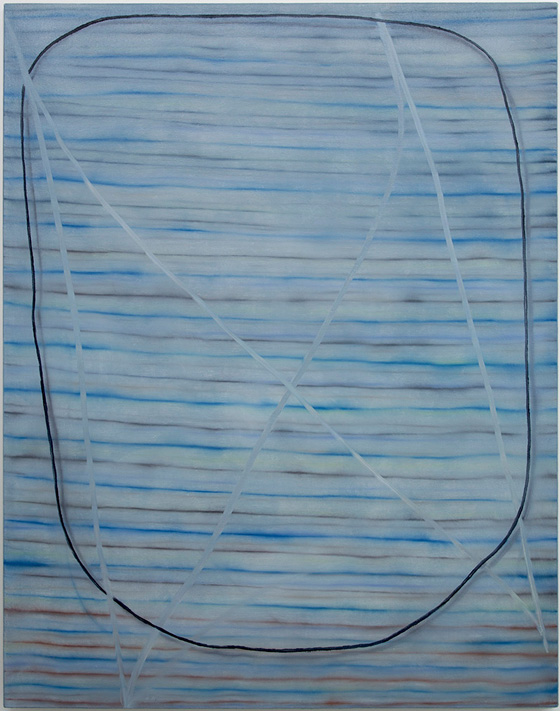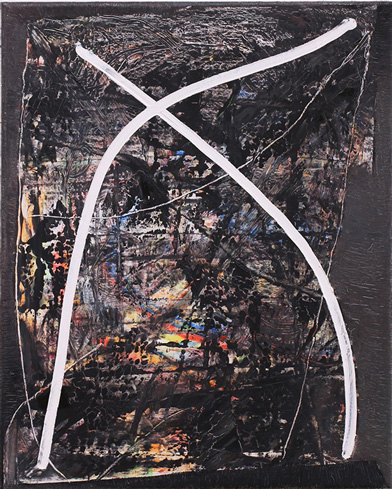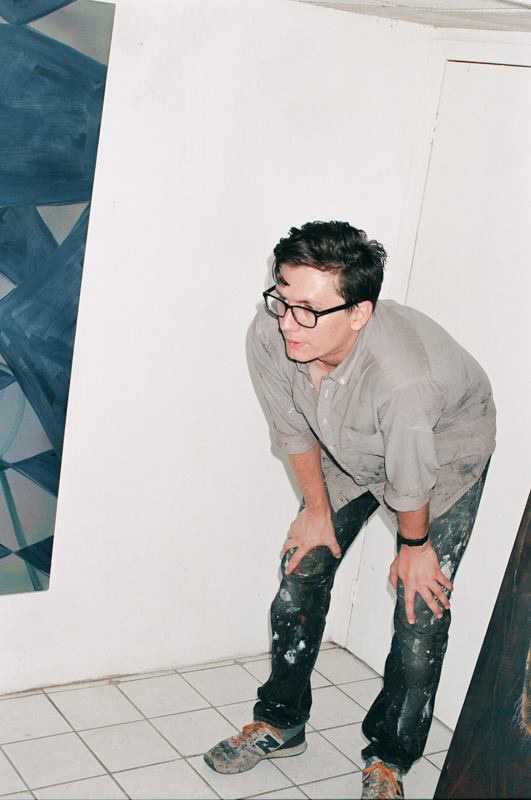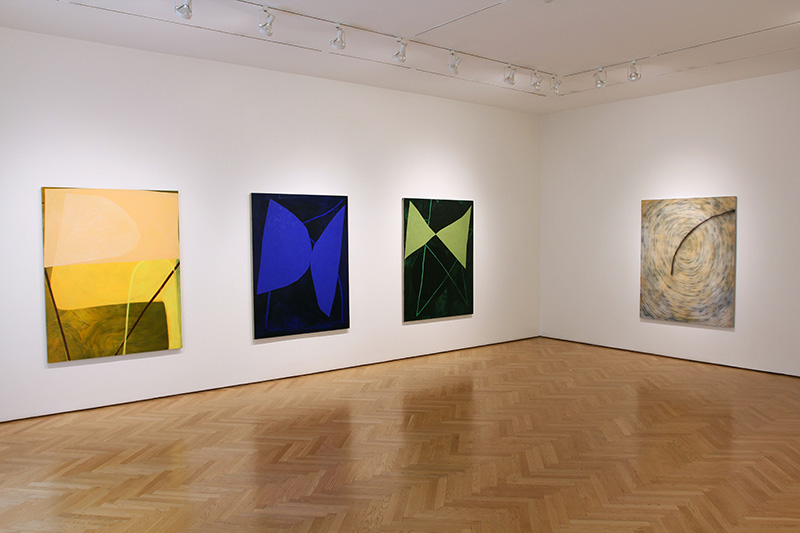King of adaptation

Clinton King, Almost Me, 2015, oil on linen, 64 in. x 50 in.
Clinton King (Fine Arts, 2000) has always been flexible, no matter where he is. As an undergrad at Columbus College of Art & Design with the benefit of a large studio, he built ambitious installations that utilized space and material. However, living in Japan several years later, he responded to a tiny, tidy studio by creating smaller, collapsible sculptures and works on paper. Now, residing in New York City, King, who also earned an MFA in sculpture from School of the Art Institute of Chicago, responds by using a Tetris-like mindset to stack the paintings he freely creates within these new limits.
Since graduating from CCAD, King has worked for artists such as Ann Hamilton and Sol LeWitt, building from his experience working at the Columbus Museum of Art and the Wexner Center for the Arts. He later worked in various galleries, and he currently works part time for a private dealer on the Upper East Side. All along the way, CCAD has touched King’s life. The late Mark Hazlerig, a longtime CCAD Illustration professor, helped him get that first gig with Hamilton, who maintains a studio in Columbus. Former professor Doug Bosch and his class "Material Studies" was an enormous influence. Charles Herndon, also emeritus, offered King space to (literally) expand a practice of large-scale installations. And fellow alum Steve Bindernagel (Fine Arts, 2002) connected King with his first art-handling job in New York.
We spoke with King recently about his work and his advice to students.

Clinton King, Second nature, 2016, Oil on linen, 16 in. x 20 in.
What led you to return to painting after working in sculpture for years?
I always said in grad school that one day I'd go back to my roots as a painter. After receiving my MFA in sculpture and moving to Tokyo, I had to adapt my practice to my surroundings. I was already in transition when I discovered Sol LeWitt’s work, which introduced me to the potential in boundaries. This pragmatic approach works well being an artist in New York City, for example. I currently paint in three uniform sizes simply because it's stackable. In undergrad, I just let it flow, and was open to everything. Ironically it wasn't until I was in New York that the boundaries opened me up to those feelings again. There’s a unique sensation inherent in the limits of painting.

Photo of Clinton King by fellow CCAD alum Dan McMahon (Media Studies, Still-Based, 2002)
How can students reading this get a resume and experience like yours?
You have to be active with your practice and put yourself in as many situations as you possibly can. While in Columbus, I worked as a fabricator in scenic design. I’d also worked with Mark Hazlerig making monsters and faux walls. While I was working for this company, Ann [Hamilton] was looking for anyone who could do detail work. [Hazlerig] told me, “Write this number down and call it right now.” It was through Mark that I learned to work big. If I hadn’t called right then and there, I wouldn’t have gotten the job. I learned a lot from Ann's studio.

Installation view of work from the exhibition Spectral Evidence at the Stellan Holm Gallery.
And how did you get where you are as a practicing artist?
There was no clear ladder, but there were definite steps. It's all about connections; the ones you’ll make in school could potentially lead to new places. You also have to take chances and embrace failure, and above all be adaptive. You can’t have a rigid view of what you want your art/life to be. It's good to keep long-term goals but they must be amenable. It’s also great to be open to influence, but essential that you keep control of your art. You can learn so much the art world, but how much of that are you going to let affect your work? It’s about finding that balance between the reality of the "system" and your integrity as an individual.
________
Read more in our series CCAD Means Success.
________
Learn more about CCAD or apply here.